From the architect:
Torterra House centres around the owners' ambition to explore biophilic design principles to create a thermally-consistent house tailored for practical use. The home utilises a (largely) self-maintained rooftop garden area with native and indigenous planting, which provides a thermal break above the off-form concrete roof structure below.
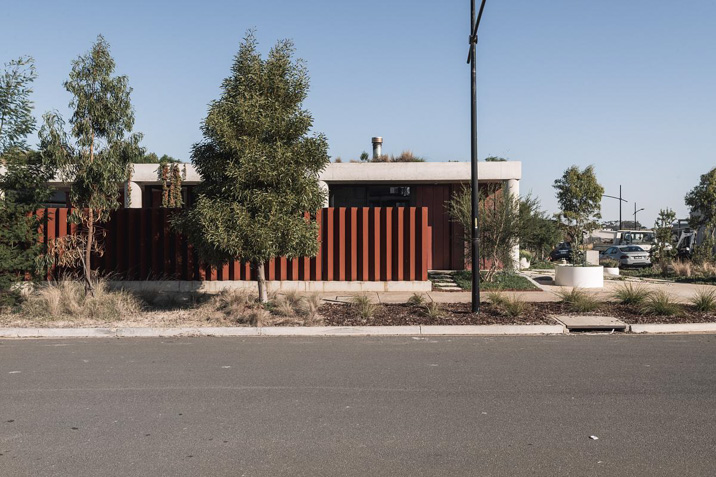
The site is situated over a reclaimed water basin and the design is engineered on a simple grid of concrete columns which are in-turn centred over concrete piers that anchor the building into suitable foundation material. The resultant structure is in essence, very similar to that of a simple commercial car park.
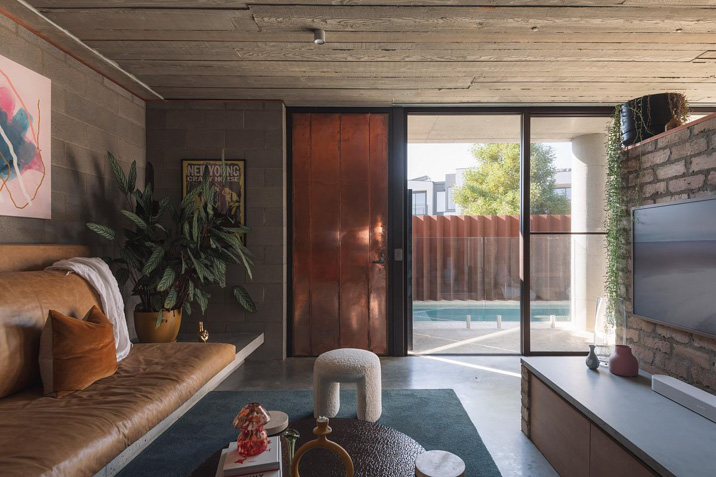
Thermal mass is further enhanced via a concrete ground slab and extensive north glazing allows for passive heating to occur directly onto the floor slab throughout the cooler months.
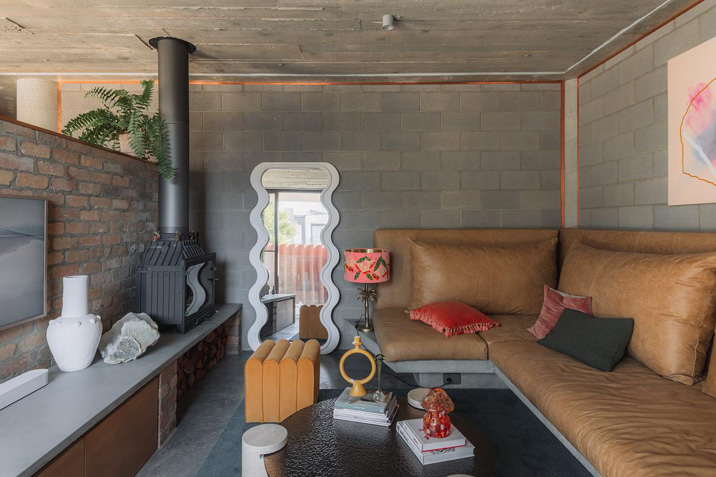
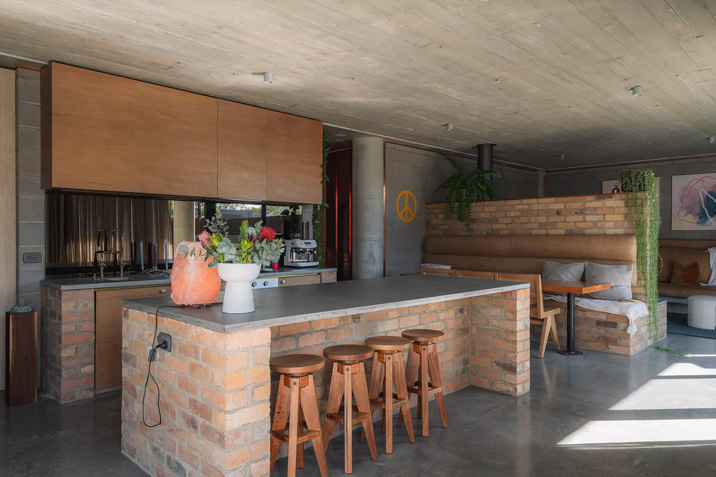
Internal planning has been specifically tailored to the occupants' family of three, with 2 bedrooms adjacent a large bathroom/amenities area and European laundry. Living zones are all oriented north for solar access and these zones directly access northern private open space and alfresco zones, along with the plunge pool.

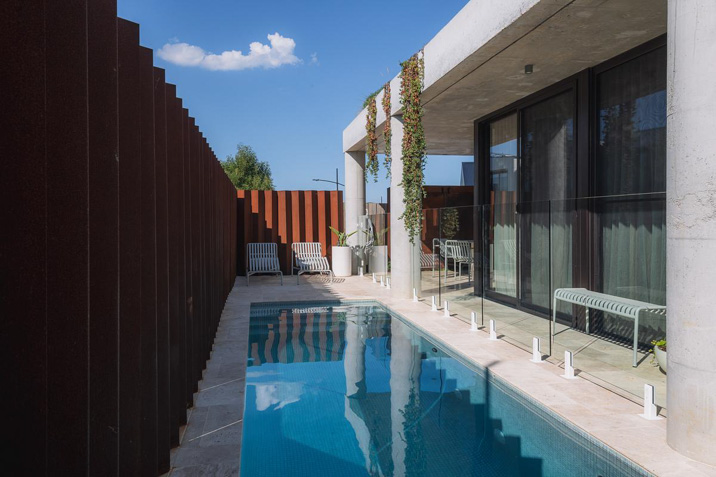
Aesthetically, the building is minimalist and robust in nature with enduring materials such as concrete and copper cladding, requiring little to no maintenance over their life cycle. Reverse block veneer walls are used for all perimeter infills and internally, face blockwork separates the zones. Recycled brickwork has been used as anchor points for joinery components and internal divisions.

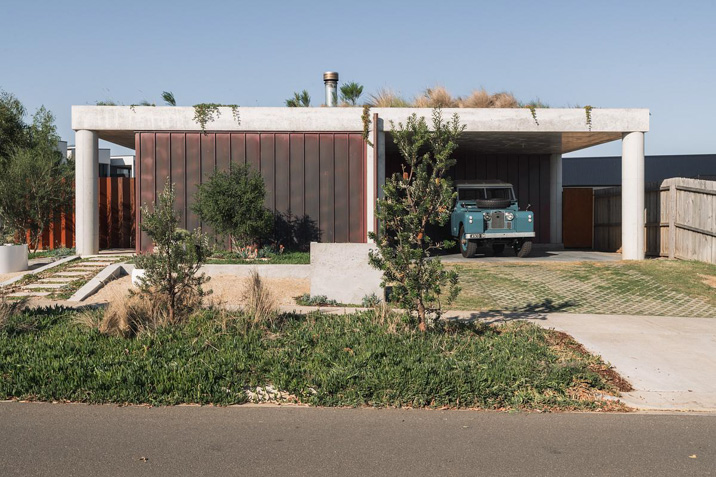
In-built leather daybeds and couches counter-balance the potential harshness of the internal surfaces. The off-form concrete ceiling in the living zones was constructed with offset Douglass Fir timbers of varying sizes creating a playful imprint patterning, further visually softening the concrete.

